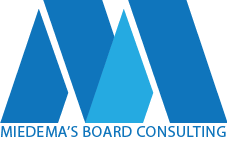U.S. nonprofit resource BoardSource has launched a campaign called “Stand for Your Mission” which promotes the power of getting boards involved with advocacy. It seeks to change the norms of nonprofit and philanthropic culture and firmly establish advocacy as an expectation for engaged and effective board leadership.
The campaign is based on the premise that board members join a board for a reason – they believe in the purpose of an organization and want to help. It also recognizes that the context is changing. There are more budget and resource limitations, different opinions and conflicting priorities. Flawed decisions can change the context and have an impact on the mission so the organization needs to be “at the table” where decisions are being made.
The most effective charitable organizations have recognized that successful advocacy does not require getting involved in partisan politics. The goal of the campaign is to help boards remind decision makers of shared values and beliefs in calm, unwavering ways and to help them see the impact of their decisions. Board members are exactly the kind of citizen leaders that decision makers need to hear from. It can also be refreshing for board members to look outside of the organization and see the context and the bigger picture the mission operates in. It might even involve taking a step back and revisiting what the mission’s purpose is and whether it can be fulfilled in new ways.
Board members might see this as just one more “action item” on their list of things to do in their already busy lives and overloaded board agendas. The nice thing is that it does not have to involve a lot of extra work. A board member’s involvement can be as simple as leveraging a network to get a phone call returned or an introduction made, encouraging attendance or participating at a key meeting, inviting a decision maker to an event or sharing the organization’s story with a donor or decision maker.
Not every board will be ready for a full-on discussion about advocacy and some may already have a sophisticated public policy strategy however there still might be ways for board members to help leverage the strategy. The discussions that have to take place sound a lot like those around strategic planning – it starts with a discussion about the organization’s mission, goals and vision for the future. As with the strategic planning process it also involves taking a step back to see the bigger picture and whether there are broader issues associated with the core work. The board needs to analyze the environment in which the organization exists in order to identify and understand the opportunities and threats and see whether there are ways for the board to be proactive in dealing with external factors. Out of this work a public policy strategy will emerge (be sure the public policy strategy remains non-partisan and does not violate any lobbying or campaigning legislation). Once the board knows what it can do, it can map the board members’ spheres of influence and see where it makes sense for the board to get involved. In some cases training and guidance might be required to learn how to engage effectively in advocacy efforts. It is critical that the board members involved in advocacy understand the key messages and know the stories and case studies that provide compelling evidence.
Once the plan is in place, the board needs to add it to the Board Roles & Responsibilities in their board policy manual to ensure it is a lasting effort and becomes embedded in the culture. The board can even recruit board members who can help fulfil the mission.
The bonus in the Canadian context is that the board’s advocacy efforts do not affect the “political activities” section of the T3010 because there should be little to no cost associated with board member advocacy.
To read more about this idea and inspirational examples of boards that have made it work as well as obtain specific actions of how to get started, visit the Stand for Your Mission website at www.standforyourmission.org.







